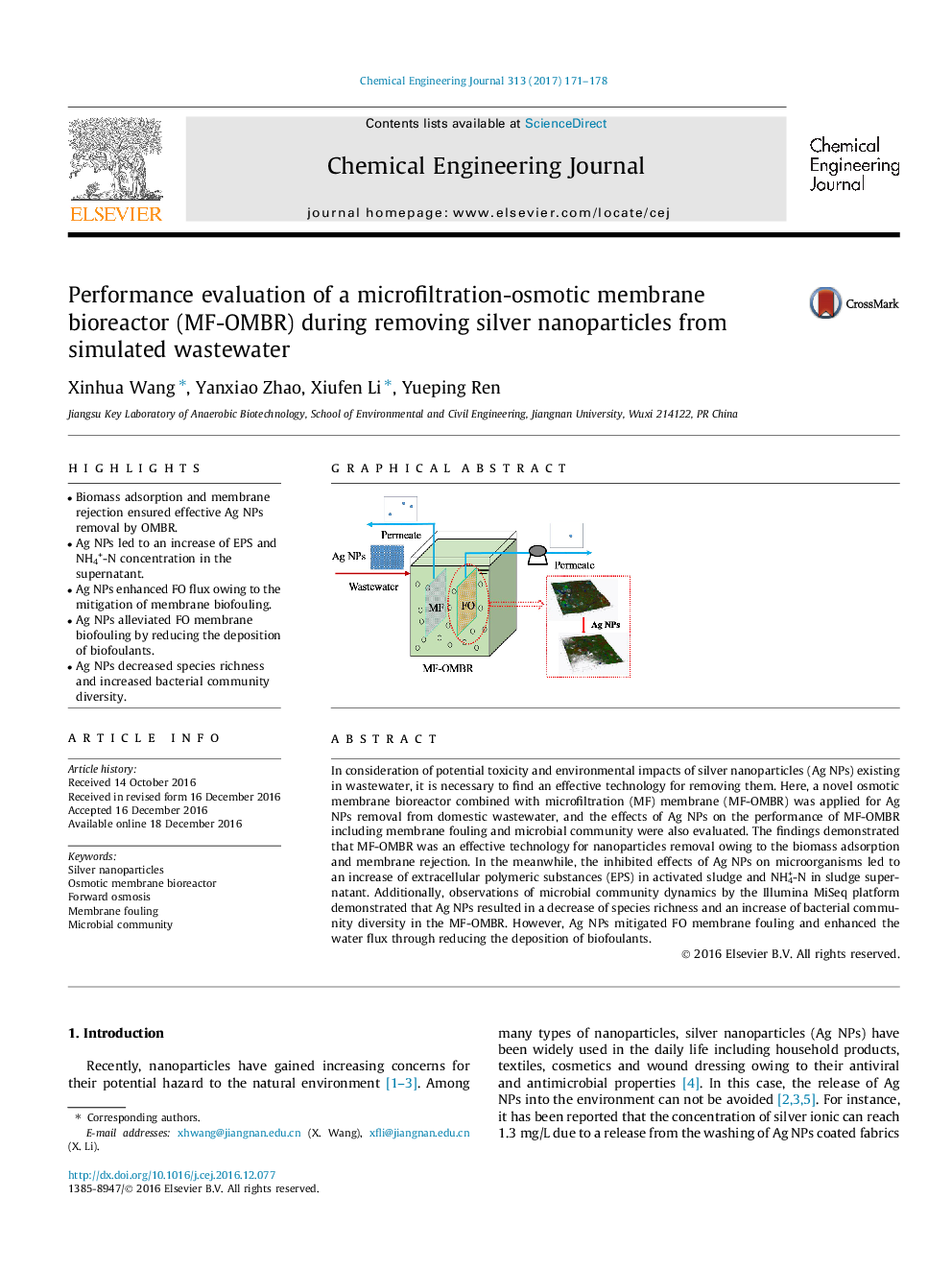| Article ID | Journal | Published Year | Pages | File Type |
|---|---|---|---|---|
| 6466533 | Chemical Engineering Journal | 2017 | 8 Pages |
â¢Biomass adsorption and membrane rejection ensured effective Ag NPs removal by OMBR.â¢Ag NPs led to an increase of EPS and NH4+-N concentration in the supernatant.â¢Ag NPs enhanced FO flux owing to the mitigation of membrane biofouling.â¢Ag NPs alleviated FO membrane biofouling by reducing the deposition of biofoulants.â¢Ag NPs decreased species richness and increased bacterial community diversity.
In consideration of potential toxicity and environmental impacts of silver nanoparticles (Ag NPs) existing in wastewater, it is necessary to find an effective technology for removing them. Here, a novel osmotic membrane bioreactor combined with microfiltration (MF) membrane (MF-OMBR) was applied for Ag NPs removal from domestic wastewater, and the effects of Ag NPs on the performance of MF-OMBR including membrane fouling and microbial community were also evaluated. The findings demonstrated that MF-OMBR was an effective technology for nanoparticles removal owing to the biomass adsorption and membrane rejection. In the meanwhile, the inhibited effects of Ag NPs on microorganisms led to an increase of extracellular polymeric substances (EPS) in activated sludge and NH4+-N in sludge supernatant. Additionally, observations of microbial community dynamics by the Illumina MiSeq platform demonstrated that Ag NPs resulted in a decrease of species richness and an increase of bacterial community diversity in the MF-OMBR. However, Ag NPs mitigated FO membrane fouling and enhanced the water flux through reducing the deposition of biofoulants.
Graphical abstractDownload high-res image (163KB)Download full-size image
